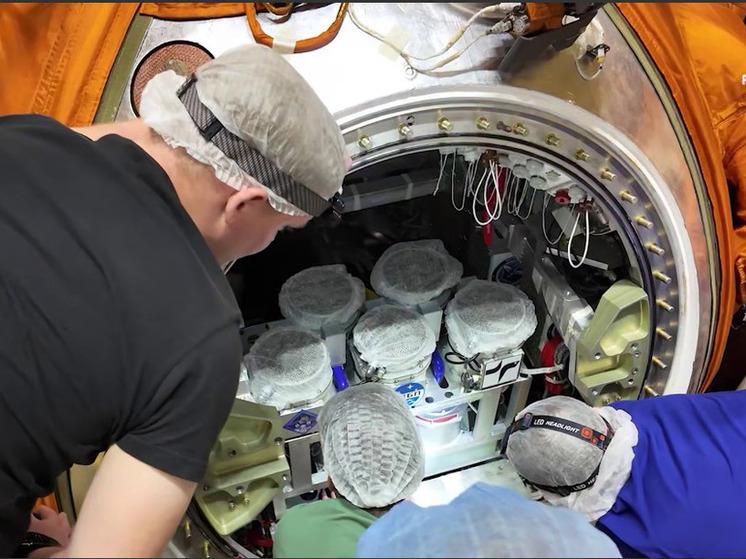Roscosmos Shares Footage of Mice Flying on Satellite

Roscosmos sent mice into space for 30 days

test banner under the title image
Roscosmos has published a video recording from one of the modules of the Bion-M No. 2 biological satellite, launched on August 20. The footage, posted on the state corporation's Telegram channel, shows three mice in a state of weightlessness.
The biosatellite was launched into orbit on the evening of August 20 from the Baikonur Cosmodrome. The device is expected to remain in space for 30 days and land in the steppes of the Orenburg Region on September 19.
There are 25 modules on board the Bion-M, each of which contains three mice of the C57BL/6 line, the most common breed of laboratory rodents. This crew has two duplicates on Earth: 75 mice will spend a month in vivarium conditions, and another 75 in a stand simulating the equipment of a biosatellite.
As Alexander Andreev-Andrievsky, head of the animal phenotyping laboratory at the Institute of Medical and Biological Problems (IMBP) of the Russian Academy of Sciences, told TASS, 15 animals on board the satellite will be kept on dry food, and 60 on paste-like food. Of these 60 mice, nine individuals are especially vulnerable to radiation exposure, nine have increased resistance due to pharmacological correction, and the remaining 42 have standard sensitivity to radiation. Such a sample will allow a more complete description of the radiation situation in polar orbit.
According to Andreev-Andrievsky, the life support system on Bion-M No. 2 has been significantly modernized compared to the first apparatus in the series - in all its main parameters it meets modern requirements.
After returning to Earth, the mice will be periodically dissected to obtain “snapshots” of how they survived the flight and how their recovery is going. Some of the rodents will be studied in a field lab immediately after landing, the rest on the first, fifth, fifteenth and thirtieth day. These studies are aimed at improving the recovery process for people after long flights into deep space.
The main data set is planned to be analyzed within a year after the mice return. Particularly difficult is the analysis of video materials, the total duration of which after the mission is completed will exceed two years. As Andreev-Andrievsky noted, to speed up the processing of this data, scientists plan to use artificial intelligence, specially trained for these purposes.
Read the article on the topic: Polar Orbit Test: Russian Biosatellite Bion-M No. 2 Launched into Space
Subscribe to "MK" in MAX . With it you will always be up to date with the latest events.

mk.ru






